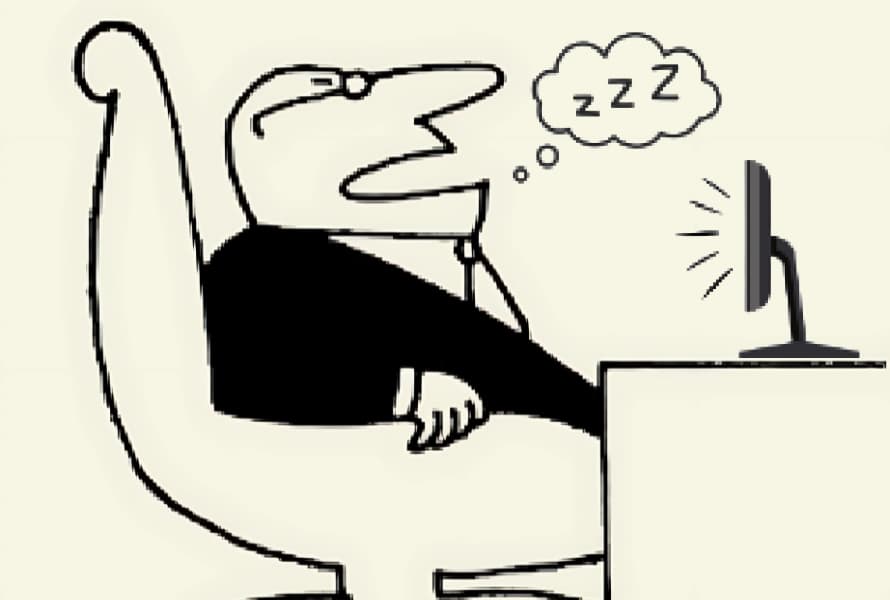Sleep has been getting more attention in the public eye over recent years, and very much deservingly: the U.S. economy alone is estimated to lose up to over $400 billion annually due to country-wide sleep deprivation (Hirshkowitz et al., 2015). You see people going on podcasts talking about sleep, with prominent figures such as Andrew Huberman and Matthew Walker at the forefront of raising public awareness on this topic. If, 10 years ago, wearing blue-light blockers would get you mocked, and only Tim Ferriss (perhaps) would be relieved of catching strays for it, now putting on these weird orange-lens glasses is deemed at least closer to normal.
Sleep? Only in my dreams.
Sleep is essential for everything happening in our bodies, and as with all basic health-related matters, it’s not that sleep is “beneficial” or that “sleeping enough is good for your health”; it’s that not doing it (enough) is so harmful.
So, what is the “meta” behind getting good sleep?
Principles:
– Consistency
– Calmness
– Lack of stimuli
Methods (in order of execution):
– Finish caffeine consumption 12 hours before sleep.
– Finish napping 6 hours before night’s sleep.
– Finish eating 3-4 hours before sleep.
– Finish all exercise at least 90 minutes before sleep.
– Include a wind-down routine for relaxation before sleep.
– Sleep in a cool temperature (16-18ºC).
– Sleep in a room as dark as possible.
– Sleep in a quiet room.
– Wake up without an alarm clock when possible.
– Get sunlight before and after sleep.
– Follow a consistent sleep schedule every day of the week.
The System: Automating Your Routine
Now, one of the main topics discussed in the context of improving sleep is getting rid of light pollution: the excessive, misdirected, or obtrusive artificial light produced by human activities that interferes with the natural darkness of the night sky. And as gadgets emit light too, turning them off might be a good idea…
Not for me, though; I found the best setup to be able to use my devices before sleep without disrupting my drowsiness due to gadget light. We’ll need:
– A pair of blue-light blockers
– 3 minutes for gadget setup.
You do it once—it’s all automated (except for putting on the glasses)—and you get better sleep for who knows how long. Apple has several nice features for minimizing light exposure, but the guides for setting them up were too long, so I made my own:
– iPhone
– Mac.
The principle behind it is making the color of the light emitted by gadgets’ displays as warm as possible, which is closer to the red sunlight during sunset that prepares you for sleep, and to eliminate bright white colors by switching to dark themes.
I have experimented a lot with creating this system and found that automated functions are more than enough. As consistency is key to sleep, automation is key to consistency. I could go further and manually turn on “Reduce White Point” daily to improve the setup by teeny-weeny margins, but that would go against consistency, so there’s no need to overcomplicate.
Some people might also remember f.lux, a desktop software dedicated to increasing the warmth of your display (not literal, only color), but I didn’t like that they insisted on making it automatic and did not let users set up their own preferred time for the color change to occur. Ultimately, I automated it myself with Apple’s Shortcuts using Color Filters, and it’s much more convenient.
Surprisingly, these functions exceeded my expectations, as I can both wind down and use my gadgets without disrupting my sleep. Pro tip: reading books is one of the best winding down activities you can do.
I have been using this routine for quite some time and can vouch for its effectiveness and convenience. Also, I suspect the blue-light blockers do have a placebo effect leading to sleepiness, which is a nice bonus.
Overall, consistency is key, and let me tell you, when sleep does not mean “do not use gadgets 1 hour before sleep,” it gets really easier, leading to even more consistency.
Set up your gadgets and enjoy some good old Zzz’s! :)
Reference: Hirshkowitz, M., Whiton, K., Albert, S. M., Alessi, C., Bruni, O., DonCarlos, L., ... & Kapur, V. (2015). National Sleep Foundation’s sleep time duration recommendations: methodology and results summary. Sleep Health, 1(1), 40-43.



